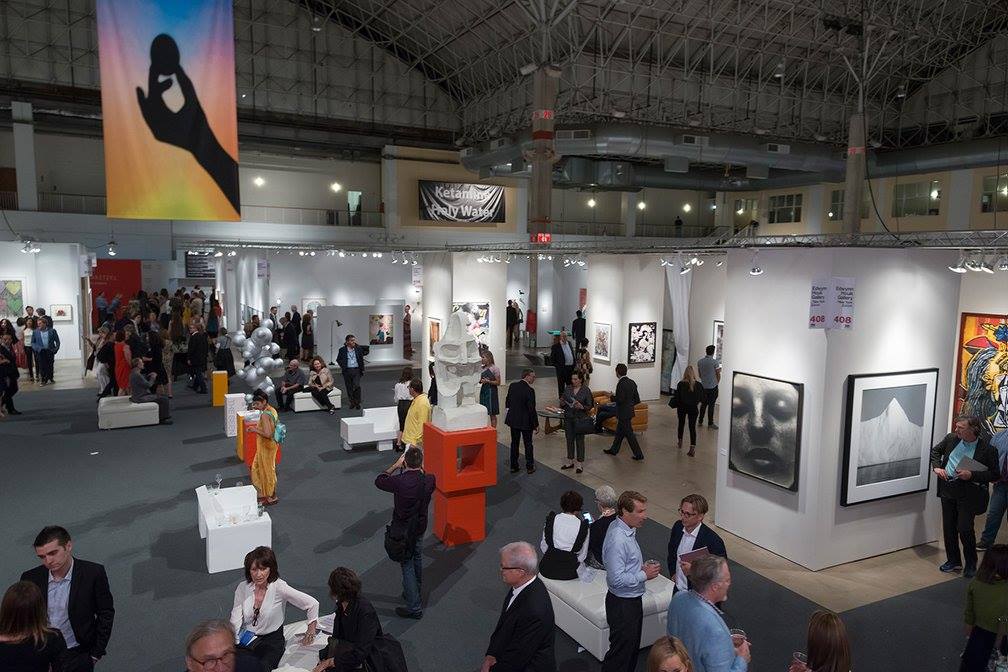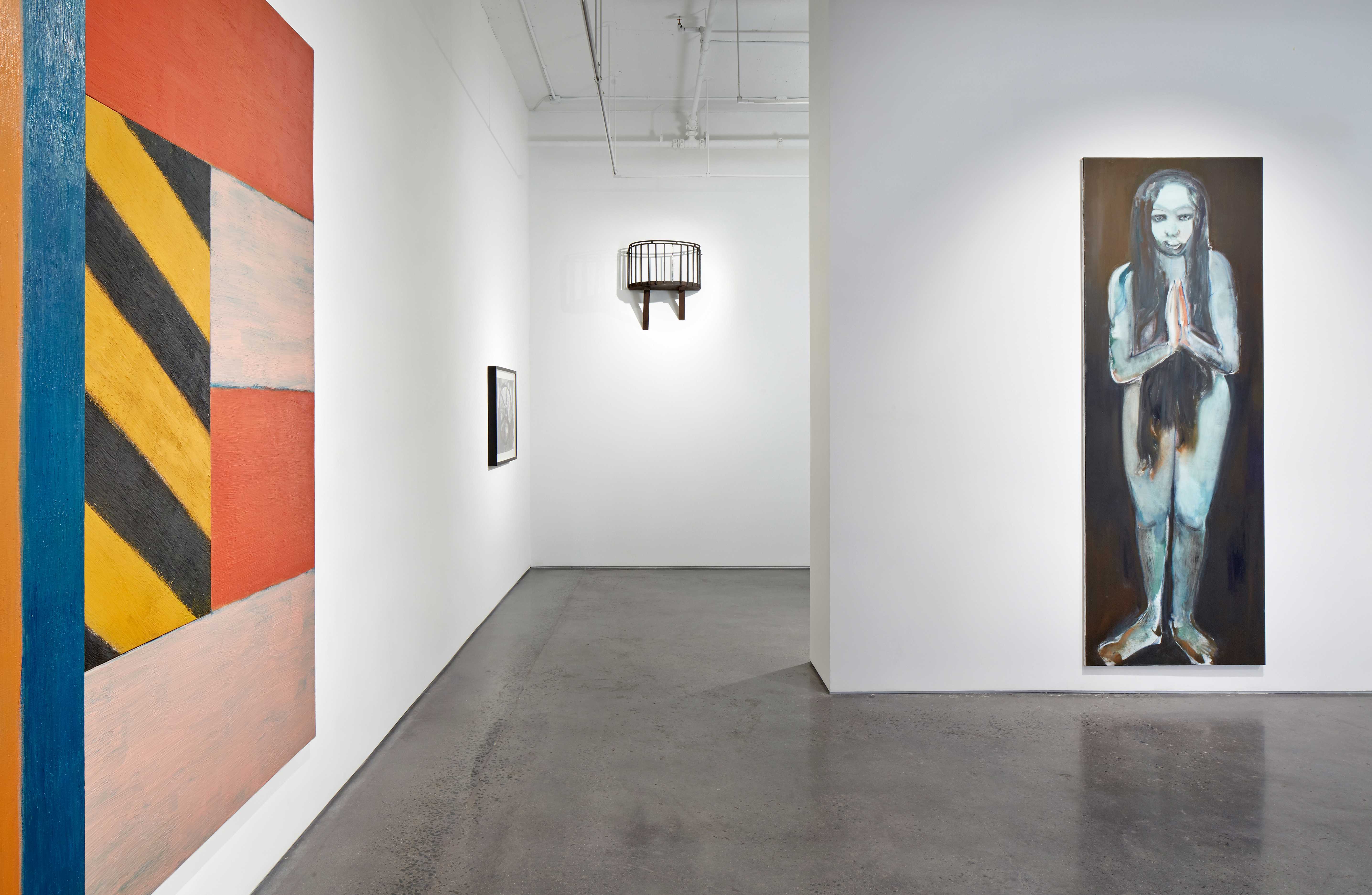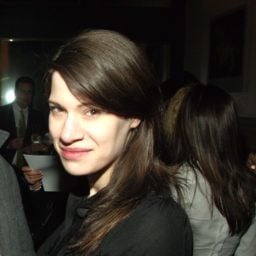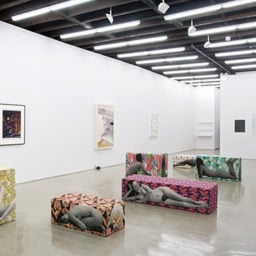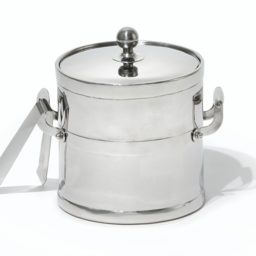How Young Artists Are Setting Prices for Their Work

Pricing
is art’s Pandora’s box. An equation predicated on the often conflicting
interests of quality and demand, the price of an artwork must take into
consideration all kinds of variables, from standardized factors like
size and production, to more capricious considerations like provenance
and likability. For young artists, pricing represents an obstacle
whereby they must assign value to a product that (in most cases)
intrinsically refutes such a reductive classification.
“It’s such a strange science. It always starts with if they have sold anything before,” explains Kyle Clairmont Jacques, co-owner of Signal, a Bushwick gallery that focuses on giving artists their inaugural solo shows. “There are certain ‘rules’ that we start with, but in some cases, it’s just a gut feeling,” he adds. “Sometimes we take how much past works were sold for and actually do the math. But for something like Meriem Bennani’s work, it’s super hard—it’s digital and site-specific and the equipment alone can be insane,” Clairmont Jacques says of the artist, who had a breakout show at MoMA PS1 this summer. “For her PS1 show we did it retail style and calculated all the expenses and doubled it!”
“It’s such a strange science. It always starts with if they have sold anything before,” explains Kyle Clairmont Jacques, co-owner of Signal, a Bushwick gallery that focuses on giving artists their inaugural solo shows. “There are certain ‘rules’ that we start with, but in some cases, it’s just a gut feeling,” he adds. “Sometimes we take how much past works were sold for and actually do the math. But for something like Meriem Bennani’s work, it’s super hard—it’s digital and site-specific and the equipment alone can be insane,” Clairmont Jacques says of the artist, who had a breakout show at MoMA PS1 this summer. “For her PS1 show we did it retail style and calculated all the expenses and doubled it!”
“There are certain ‘rules’ that we start with, but in some cases, it’s just a gut feeling,”
One
of Clairmont Jacques’s suggestions is to look at the work of
like-minded peers. And Bennani agrees. “If you are selling directly, I
would recommend talking to artists and friends who are in a similar
place with their career, and would match their price ranges,” Bennani
offers. “I would also do some extensive research on the buyer and ask
around about them.” Group shows, a common entry point to young artists’
work, provide fertile ground for this kind of comparison.
Art school is often the first place where young artists set the baseline for their work. “The rule of thumb was to pick a price based on what you would be willing to part with it for,” says New York-based painter Karen Gunderson, of her experience as a student in the 1960s. “Of course you can’t go down after you’ve sold a work, the price is set, otherwise it’s unfair.” Now, 50 years later, her experience seems to still be applicable. “One of my teachers wanted to buy a work from my thesis show,” explains Los Angeles-based artist Dashiell Manley. “He told me to think about an amount of money that was slightly higher than an amount which would make me feel ripped off and violated. I think I priced the work at $1500. He thought for a second, then said that was too much and didn’t buy it, but once the price was set it couldn’t go down!” Gunderson and Manley’s experiences underscore the importance of picking something reasonable, based on labor and expenses.
When it comes to setting a dollar value, collector and dealer Stefan Simchowitz is a champion of letting saleability lead. “The rule of the thumb is the problem,” Simchowitz offers, when asked about his advice for young artists. “If it is this size, then the starting point is X. That number is based on the gallery’s location and their rent and how much they have to spend at art fairs. That rule has been applied very broadly and has created a situation where very little sells. Pricing amongst the gallery system is extraordinarily inefficient—lacking in insight, tied up with morality of validating an artist’s work by defining its price.” If a price point isn’t selling, Simchowitz advises lowering it.
Art school is often the first place where young artists set the baseline for their work. “The rule of thumb was to pick a price based on what you would be willing to part with it for,” says New York-based painter Karen Gunderson, of her experience as a student in the 1960s. “Of course you can’t go down after you’ve sold a work, the price is set, otherwise it’s unfair.” Now, 50 years later, her experience seems to still be applicable. “One of my teachers wanted to buy a work from my thesis show,” explains Los Angeles-based artist Dashiell Manley. “He told me to think about an amount of money that was slightly higher than an amount which would make me feel ripped off and violated. I think I priced the work at $1500. He thought for a second, then said that was too much and didn’t buy it, but once the price was set it couldn’t go down!” Gunderson and Manley’s experiences underscore the importance of picking something reasonable, based on labor and expenses.
When it comes to setting a dollar value, collector and dealer Stefan Simchowitz is a champion of letting saleability lead. “The rule of the thumb is the problem,” Simchowitz offers, when asked about his advice for young artists. “If it is this size, then the starting point is X. That number is based on the gallery’s location and their rent and how much they have to spend at art fairs. That rule has been applied very broadly and has created a situation where very little sells. Pricing amongst the gallery system is extraordinarily inefficient—lacking in insight, tied up with morality of validating an artist’s work by defining its price.” If a price point isn’t selling, Simchowitz advises lowering it.
“He
told me to think about an amount of money that was slightly higher than
an amount which would make me feel ripped off and violated.”
While
not everyone agrees with Simchowitz’s philosophy, his point about
galleries is hard to debate. Most young artists sell through young
galleries, and the price reflects not just the artist’s baseline, but
the dealer’s as well. “It’s more of an art than a science; in other
words, there aren’t any really objective metrics in terms of pricing the
work,” says a young Lower East Side dealer. “There can be so much hype
out there and a lot of these artist’s prices can be highly variable.
With the way that I price at my gallery, and I think we’re lower than
other galleries, I think the biggest influence is unfortunately cost of
the gallery, and that is often not really thought of too much.” There
are sizable investments on both sides of the table. A tube of Holbein’s
cadmium red oil paint costs more than $30 per ounce. The use of a kiln
in New York? A single firing can run at $200. Image editing software
like Adobe Photoshop sets artists back upwards of $100 per year. For
galleries, a modest art-fair booth can cost over $20,000 when all fees,
travel, shipping, and production are accounted for. Plus, both parties
must consider the 10% discount for the buyer, an institutionalized
goodwill gesture. These are costs that artists should be aware of when
pricing for themselves, or brokering with their first gallerist.
When speaking about sustainable models for the emerging market, another Lower East Side dealer points to the programs of Chelsea galleries Greene Naftali and Metro Pictures. “They realized that in an emerging market, there is the phenomenon called ‘the race to the bottom,’” he says. “What that means for collectors is they know that these young artists are not going to indefinitely continue their ascent.” He consents that there is always a fraction of young artists who do maintain a steady rise in price point, but emphasizes the value of timing, patience, and long-term vision. “They wait and keep the prices low; it’s a way to protect their markets,” he says. They wait for a moment where the artist’s work gains widespread attention, an event like a major museum exhibition. “The price point then jumps from very low to very high, and in a sense it’s justified. But they wait for that moment, which actually strikes me as being the most ethical approach.”
—Kat Herriman
Illustration by Jan Buchczik for Artsy.
When speaking about sustainable models for the emerging market, another Lower East Side dealer points to the programs of Chelsea galleries Greene Naftali and Metro Pictures. “They realized that in an emerging market, there is the phenomenon called ‘the race to the bottom,’” he says. “What that means for collectors is they know that these young artists are not going to indefinitely continue their ascent.” He consents that there is always a fraction of young artists who do maintain a steady rise in price point, but emphasizes the value of timing, patience, and long-term vision. “They wait and keep the prices low; it’s a way to protect their markets,” he says. They wait for a moment where the artist’s work gains widespread attention, an event like a major museum exhibition. “The price point then jumps from very low to very high, and in a sense it’s justified. But they wait for that moment, which actually strikes me as being the most ethical approach.”
—Kat Herriman
Illustration by Jan Buchczik for Artsy.






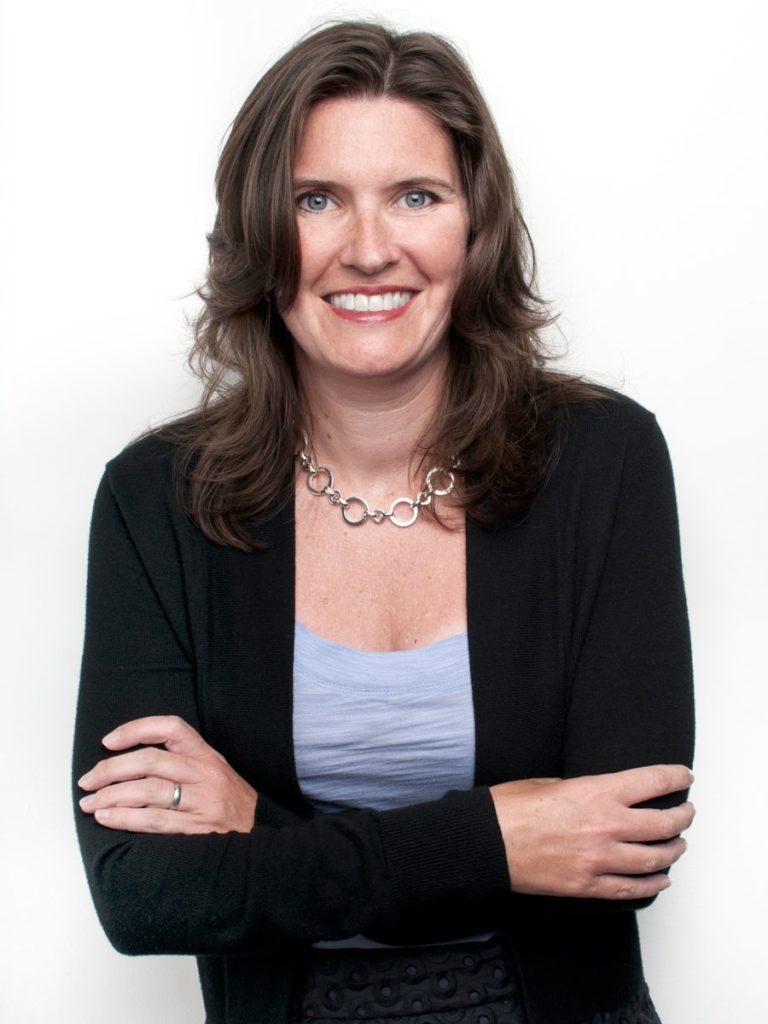


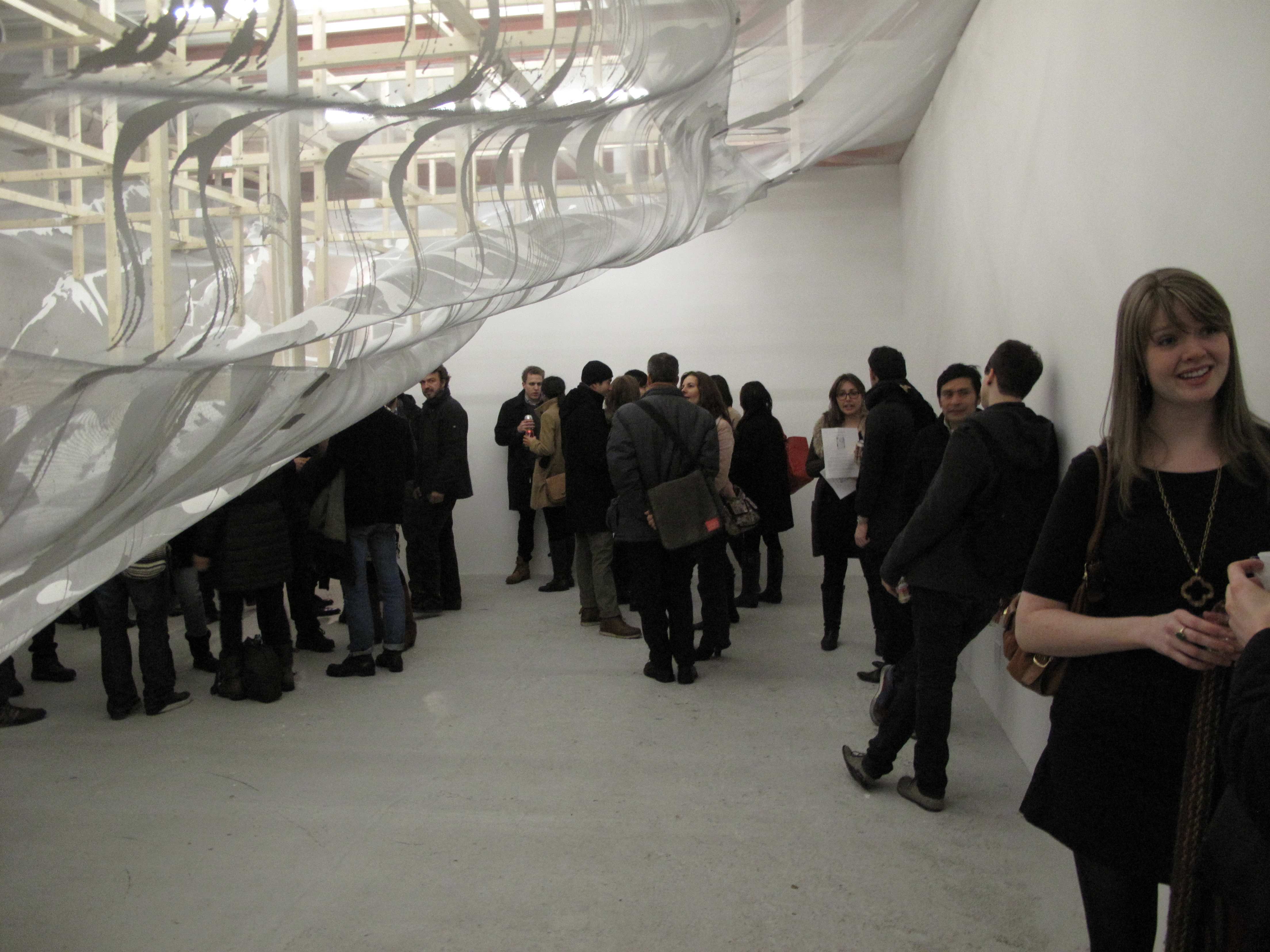 If
retail sales were tough in the first few years, inquiring minds need to
know: how does a mid-tier gallery survive without solid retail? In
Tierney’s case, her secondary market expertise served as a lifeline for
the gallery’s primary program. Or, as she puts it while pointing at a
If
retail sales were tough in the first few years, inquiring minds need to
know: how does a mid-tier gallery survive without solid retail? In
Tierney’s case, her secondary market expertise served as a lifeline for
the gallery’s primary program. Or, as she puts it while pointing at a 